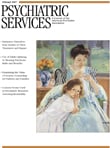Sigmund Freud presciently wrote in 1914 that "we must recollect that all our provisional ideas in psychology will presumably someday be based on an organic substructure." Indeed, history has proven this to be true not only in the psychodynamic areas of interest to Freud but also to subjects of interest to other early investigators in the behavioral sciences. Freud addressed, among other things, the relation of anger-turned-inward to anger-turned-outward. Introjected rage was considered at the basis of depression and suicidal behavior. Subsequently, others, such as Aaron Beck, identified hopelessness as even more important than depression as a risk factor of suicide. Today suicidologists believe that impulsivity coupled with depression and despair may be most critical in determining who is most at risk of suicide. Research indicates that impulsivity in suicide, homicide, and other impulsive behaviors is linked to decreased serotonin in the ventral medial prefrontal cortex of the brain.
Laurence Tancredi, a psychiatrist and lawyer with an enduring interest in the biological basis of homicide and particularly in the psychology of serial killing, writes cogently in this fascinating, easy-to-read volume of the genetic basis of human behaviors long considered under conscious volition or so-called "free will"—human behaviors at various times deemed illegal, immoral, or unethical. Those interested in the primary sources or the data presented will find them, along with further discussion of legal, ethical, and research implications, in a well-annotated bibliography for each chapter. Using the language of neurobiology, Tancredi describes the foundation of many human behaviors that supplement or even supplant the metapsychology presented by pioneers in psychoanalysis, philosophy, and sociology. The biological bases of a number of behaviors are discussed, raising interesting questions regarding long-held cultural assumptions of free will and moral development.
The opening chapters critique issues of morality given the current state of knowledge in neuroscience. Subsequent chapters address the biological basis of sexual behaviors, self-destruction and other destructive acts, deception, and greed. In the chapter on sex, not only is the biological basis of object choice addressed but also addressed is what appears to be the genetic determinants of polygamy or monogamy and the presence and absence of maternal or paternal behavior among human beings and our most closely related primates.
The chapter on money addresses among other issues hoarding behavior and greed, as well as the drive to take risks in gambling and investment that are easily undertaken by people who sometimes accrue great wealth. These chances are shunned by the risk-aversive with an almost atavistic drive to avoid anything that may be self-destructive.
The chapter on violence raises serious questions regarding current concepts of individual responsibility for physical abuse. This discussion is of particular interest to lawyers, philosophers, and forensic psychiatrists. It appears that the risk of outwardly directed violence is no more equally distributed under extreme circumstance than is the risk of suicide. Variables have been identified that explain susceptibility to expression of particular personality traits and behaviors. For instance, there appears to be an "aggressive gene," a defect in the gene responsible for the metabolism of various neurotransmitters in the brain.
Aberrations of this gene may lead to aggression and violence. Investigators have found that even among male children with the aggressive gene, the degree to which they grow up to be violent is related to the amount of maltreatment as a child. Those who are maltreated grow up with expected antisocial problems. Interestingly, further genetic studies indicate that girls may also inherit the defective gene but are usually born with a sufficient amount of the normal gene, so they are not affected. In most instances males with the aggressive gene who were abused as children have a probability of becoming violent as high as 85% to 90%.
This book is replete with other examples of personality traits that are labeled criminal, psychopathological, or otherwise culturally or developmentally unacceptable. These traits appear to have a genetic basis, which allows environmental factors to have an impact. The data Tancredi presents raise a considerable number of questions about what we see as morally "bad" or psychologically "mad" and thereby challenges us to reconsider how courts should view behavior and how contemporary concepts of morality may need to be altered to better reflect state-of-the-art science to foster more humane treatment of people so genetically programmed. Of course for those of us in psychiatry, it raises the need for further research to determine how both developmental and treatment interventions may impact genetic endowment.
This book establishes the historical framework for a change of focus from examination of mental activity—mentalism—to that of examination of the physical activity of the brain—physicalism—to how we understand thinking and behavior. This includes the way we deal with moral and ethical issues and our evolving, but often frustrated, efforts to develop an ideal humane society by maximizing individual potential in ways consistent with what we are as human beings rather than false assumptions about what we think we are or should be.

